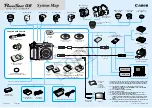
FireWire
PIKE Technical Manual
V5.0.0
38
Requirements for laptop and 1394b
As mentioned above, 1394b requires low latency for data transmission (small
receive-FIFO). In order to get the most out of your camera-to-laptop config-
uration, we recommend the following chipset for your laptop:
•
For Intel-based laptops, chipset 915 (or higher)
•
For non-Intel based laptops (e.g. AMD), PCI Express compatible chipset
Because most laptops have (only) one PC-card interface, it is possible to con-
nect one PIKE camera to your laptop at full speed. Alternatively laptops with
an additional 1394 ExpressCard interface can be used.
The following cardbus adapter for laptops allows the connection of two
industrial screw locking cables (obtainable at AVT).
Caution
As mentioned earlier, it is
very
important
not
to exceed an
inrush current of 18 mJoule in 3 ms. (This means that a
device, when powered via 12 V bus power must
never
draw
more than 1.5 A, even not in the first 3 ms.)
Higher inrush current may damage the physical interface
chip of the camera and/or the phy chip in your PC.
Whereas inrush current is not a problem for one Pike camera,
daisy chaining multiple cameras or supplying bus power via
(optional) HIROSE power out to circuitry with unknown
inrush currents needs careful design considerations to be on
the safe side.
Note
Recent developments at Apple (TM) allow the INTEL based
Apple computers (both laptops as well as desktops) to run a
Win-OS. This makes it possible to use AVT 1394 camera tech-
nology with the same AVT-SDKs.
















































